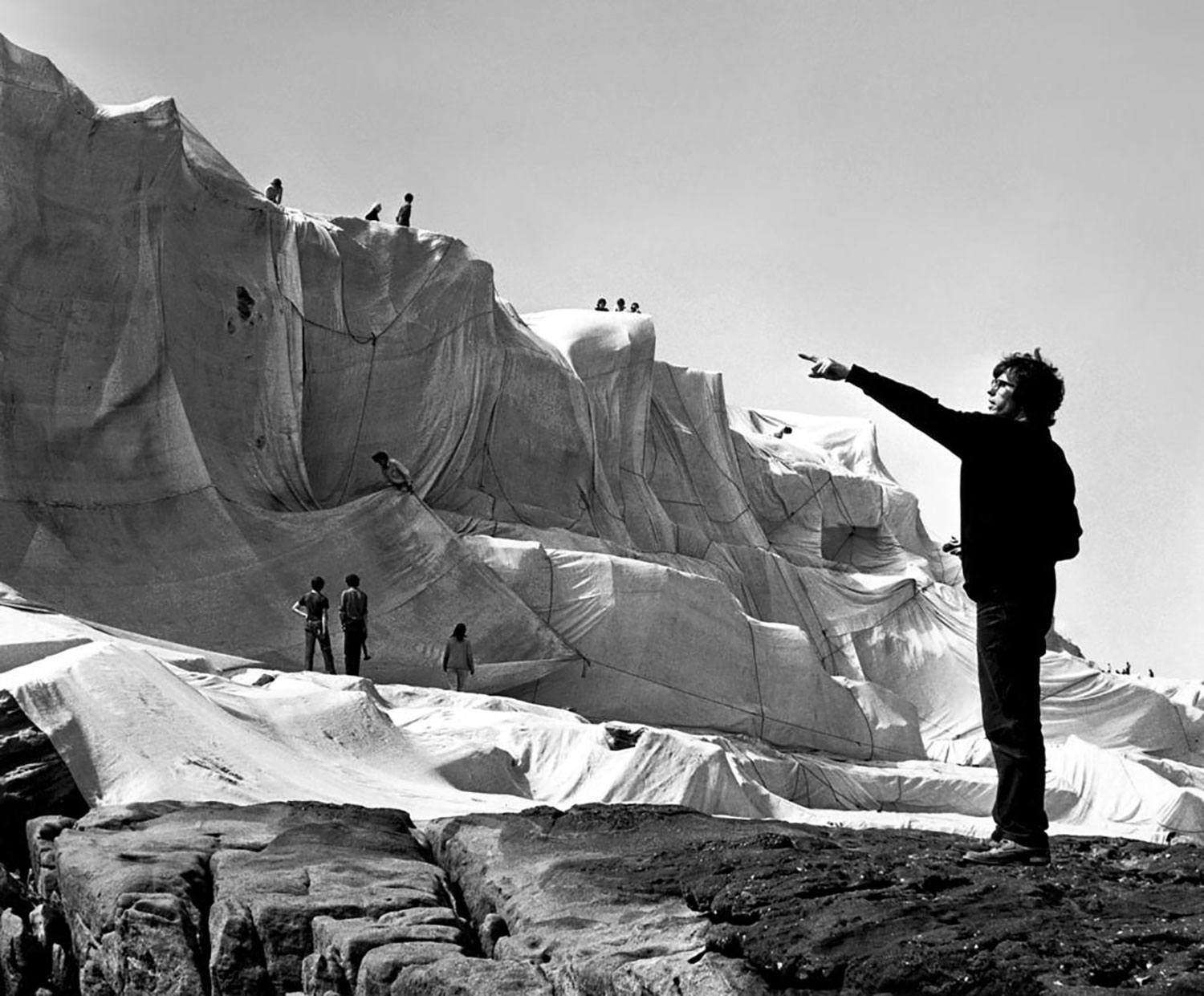
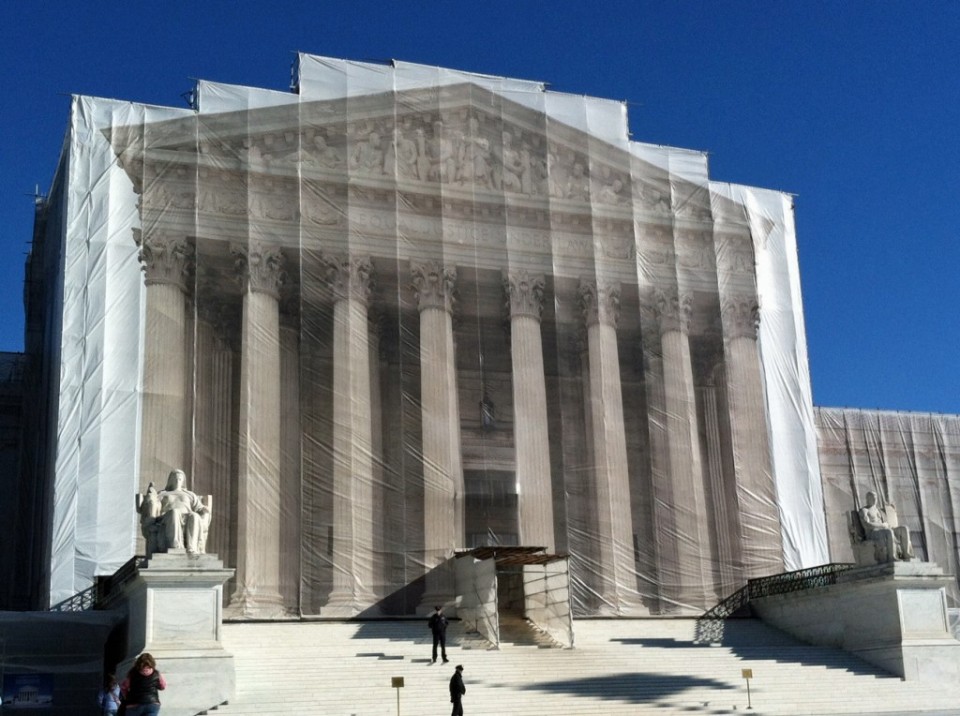

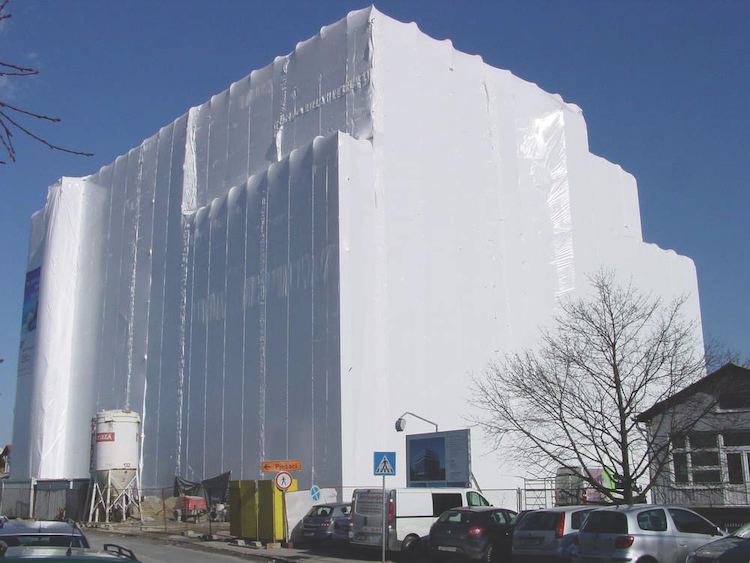

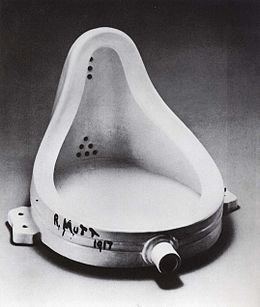
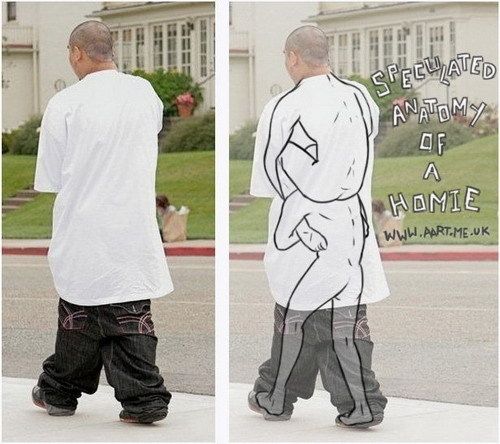
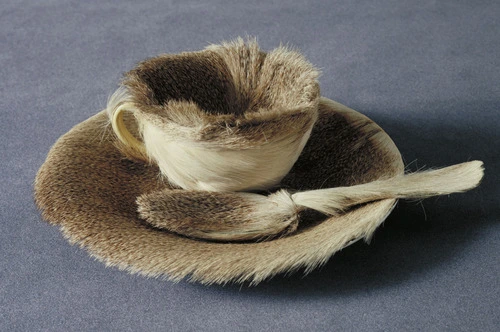
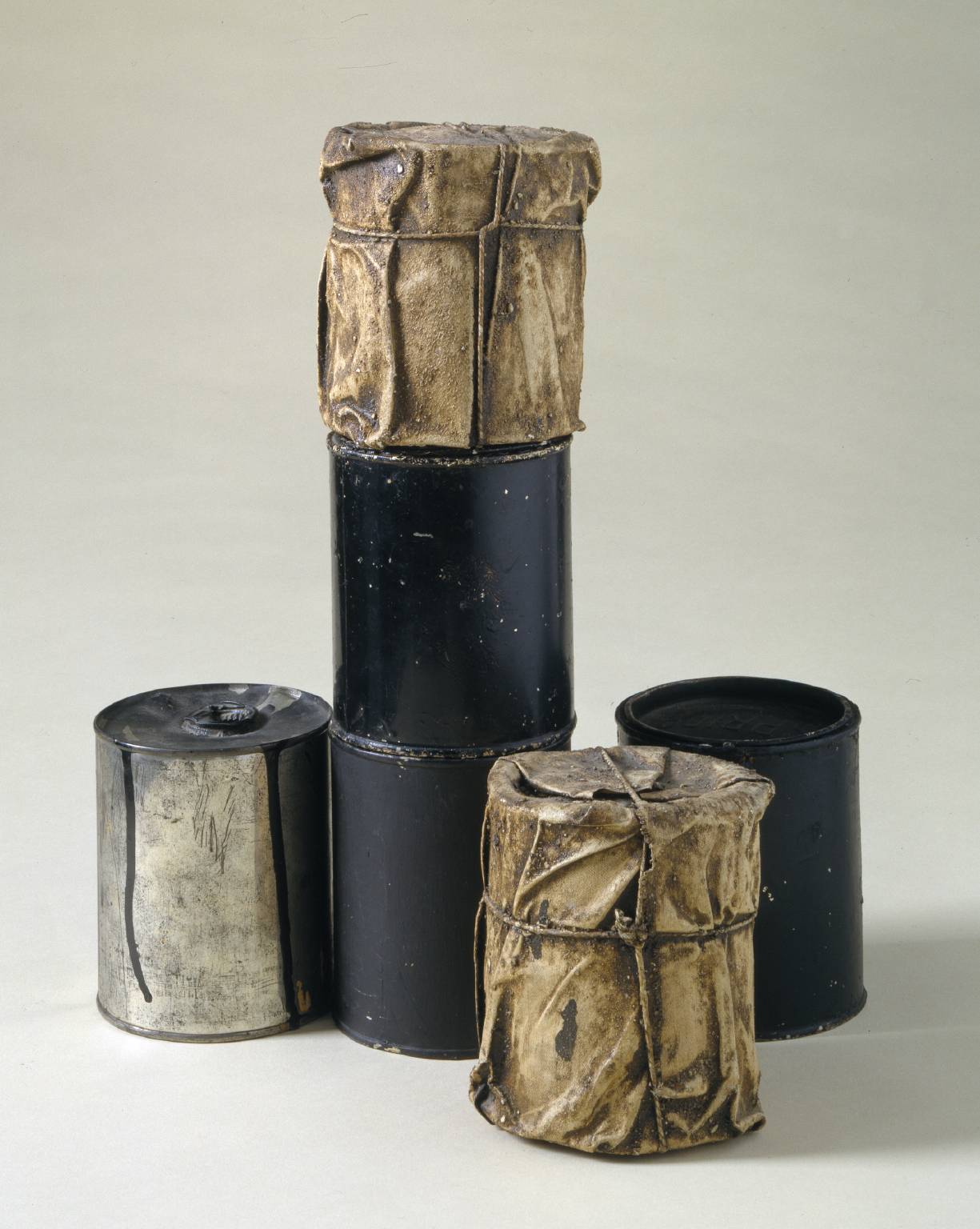
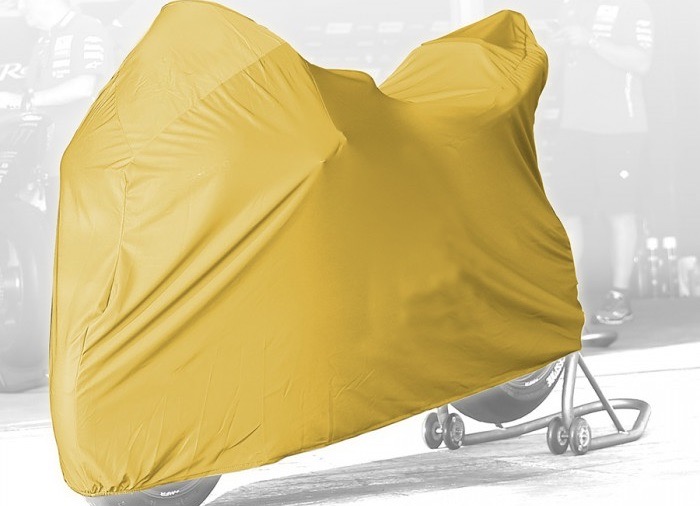
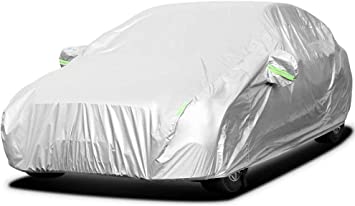
“The sexual connotations of Object (Le Déjeuner en Fourrure) are obvious: drinking from the furry cup is an explicit sexual reference. But there is much more to it than
a saucy joke. The image of a fur-lined cup and spoon would not be out of place in the first chapter of any book about anxiety nightmares, in which any pretence of being
in control is subverted by sinister happenings. In this instance, a cup and spoon has grown hair, turning objects from which one should derive relaxation and pleasure into something aggressive, unpleasant and faintly disgusting. It has connotations
of bourgeoise guilt: for wasting time gossiping in cafés and mistreating beautiful animals (the fur is from a Chinese gazelle). It is also an object designed to engender madness. Two incompatible materials have been brought together to create one troubling vessel. Fur is pleasing to touch, but horrible when you put it in your mouth. You want to drink from the cup and eat from the spoon—that is their purpose—but the sensation of the fur is too repulsive. It’s a maddening cycle.”
Marcel Duchamp's Fontaine evokes the same idea but is executed in a different way. Here the artist takes a banale object out of it's context, forcing you to look at it with more attention.
By covering a banale object with fur, Meret Oppenheim makes you see the object like it was your first time seeing it. The object loses it's original purpose.

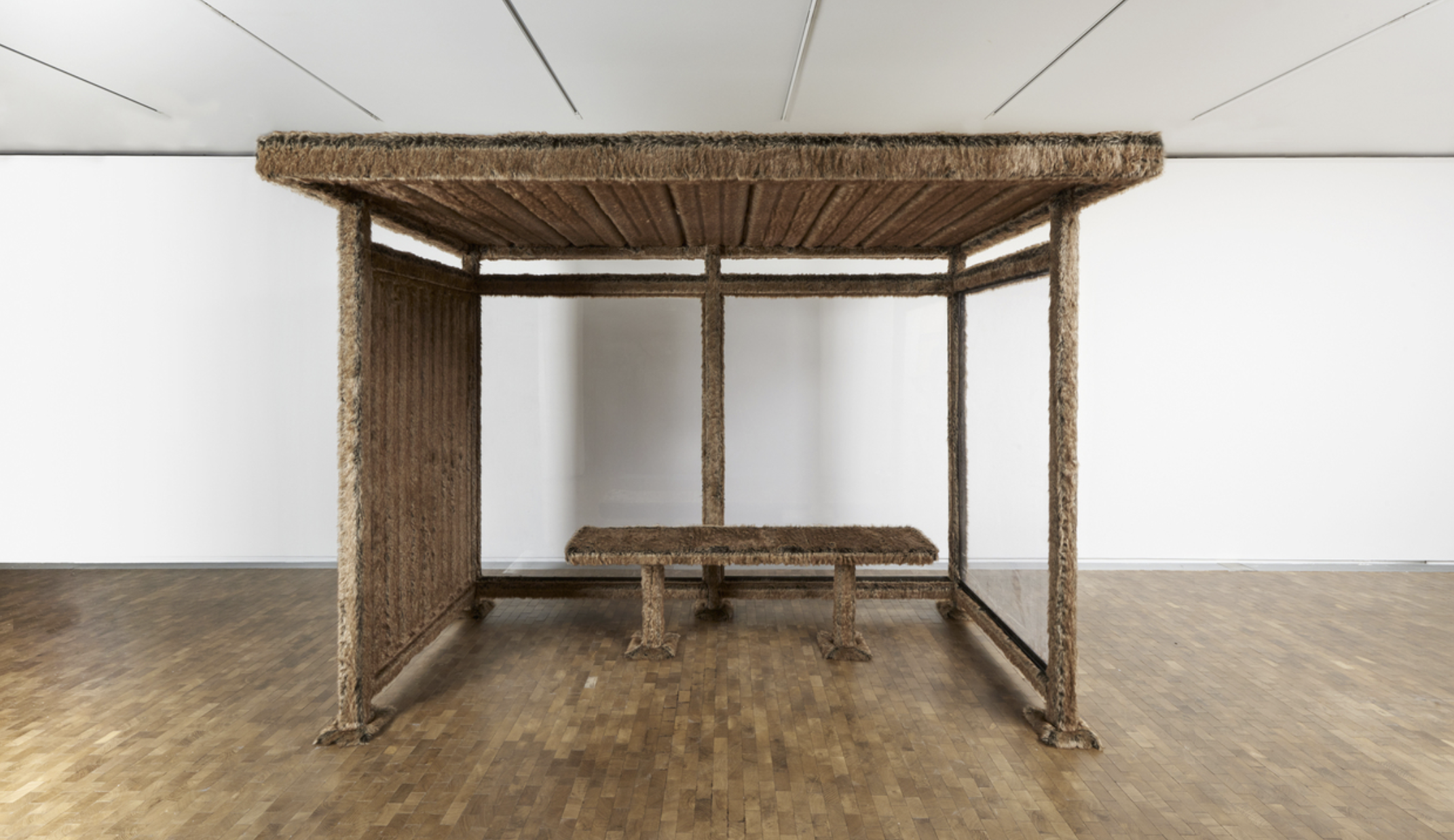

'Bus Stop' is based on a founding principle of Martin Margiela’s practice: to highlight and relearn how to look at that which surrounds us, the world that has become so familiar that we are blinded by it. The bus shelter is one of the most common and least discussed urban presences. Margiela looks at it as a monumental sculpture of everyday life. Oversized and covered in fake fur, it becomes almost animal, a place of refuge, of protection and welcome for the traveller, a place of dedicated hospitality. Its presentation behind glass connotes a precious item that we would like to protect. Here, Margiela takes up a paradoxical device of our culture that pushes us to lock away and distance ourselves from what we value. Here, the metamorphosis of the cold, industrial structure of the bus shelter into a pleasant and comfortable place contributes to transforming its impact. The softness it now emanates contrasts against its coldness and austerity in the public space.
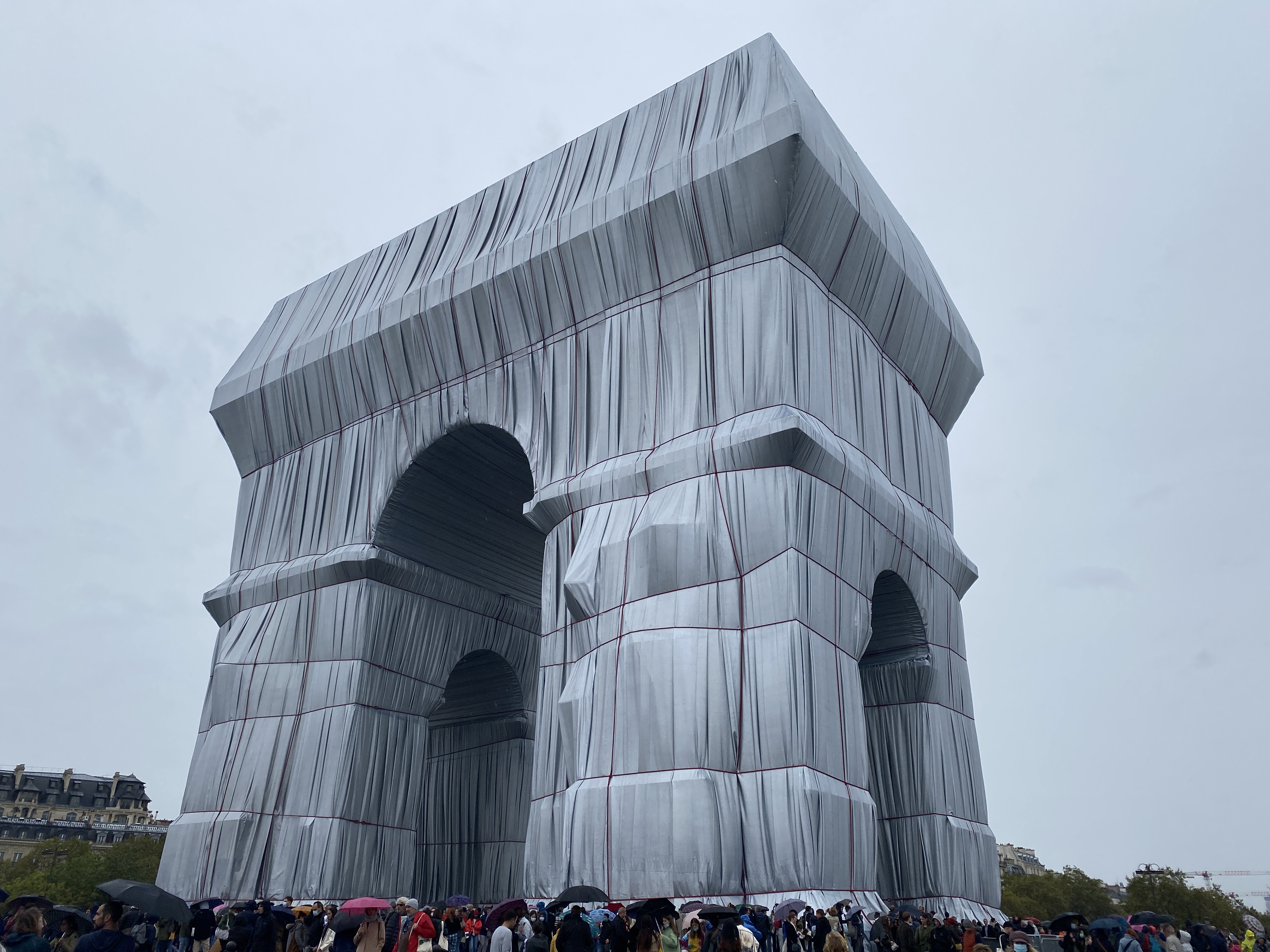
“I wanted to transform it, to turn it from an architectural object, an object of inspiration for artists, to an art object, period.”
Christo. the conceptual artist who, together with his wife, Jeanne-Claude, dazzled audiences around the world with monumental temporary installation.
“Christo and Jeanne-Claude’s artwork brought people together in shared experiences across the globe, and their work lives on in our hearts and memories.”
their oeuvre challenged the concept of public art and offered viewers a fresh look at familiar landmarks.
When the Arc de triomphe was covered up, as Christo's last project, the viewer was restricted to see the monument with all it' ornaments. Now the main thing that was left to see was the shape of the structure. If you would start drawing a building, you start with analysing the shape and the scale of it in its surrounding. Not by drawing every single little detail. This makes you see one of the biggest and most popular monuments of Paris in a different way. You're now focused on seeing how big it actually is, what the shape of it actually is and where the openings are and how they are connected.
Christo’s earliest wrapped sculptures were composed of cans and bottles found in his Paris studio between 1958 and 1960. They were to form part of a larger installation, Inventory, a room-size installation
of numerous wrapped objects revealing the artist’s interest in the modern-day phenomenon of packaging.
Usually we wrap things when are trying to coverup what's underneath it, protect something or keep things together. By doing so we either make the shape of the object more abstract and simple, because all the details are covered, or we create a completely new shape.
Fashion allows you to rethink the anatomy of the human body. Big fashion-brands like Balenciaga and Yeezy have been experimenting with this concept for a while. We also see this in the costume parties that were organised by Bauhaus.